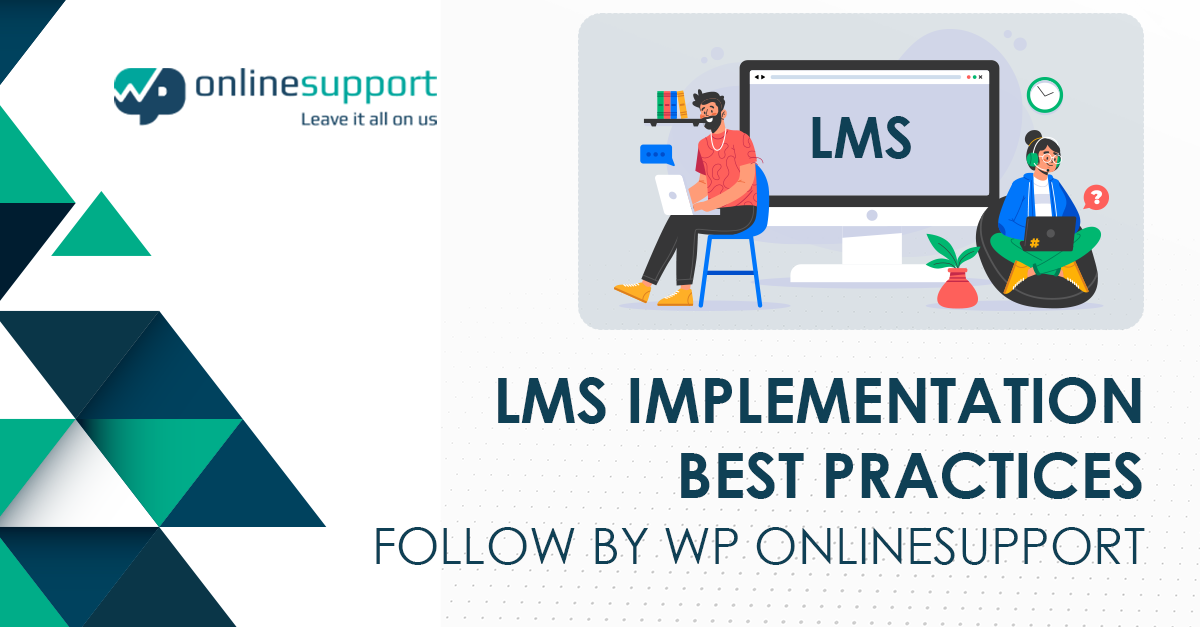Learning Management Systems (LMS) have developed into crucial tools for businesses and educational institutions alike in today’s quickly changing digital landscape. By streamlining workflows and improving the learning experience, an LMS may revolutionize training and educational practices.
However, meticulous planning, execution, and consideration of numerous elements are necessary for a successful LMS implementation. In this blog post, we will explore the best practices for LMS implementation, drawing insights from WP OnlineSupport, a leading provider of WordPress Strategy & Consulting.
Determine Specific Goals and Objectives:
Clearly determining goals and objectives is essential before starting an LMS implementation. Figure out what you want to accomplish with the LMS, such as encouraging student engagement, delivering online courses, or improving employee training. To help with implementation, clearly outline the desired outcomes.
Conduct a Needs Analysis:
In order to fully understand the unique requirements of an organization or educational institution, it is essential that you conduct a thorough needs analysis. Identify the LMS’s target audience, their educational requirements, and the necessary features and functionalities. Engage stakeholders, teachers, and students to get insightful feedback and make sure the LMS meets their expectations.
Select the Ideal LMS Platform:
Choosing an ideal LMS platform is a major choice. Take into account elements like usability, scaling, customizability, integrations, security features, and support services. LearnPress and LearnDash, two WordPress LMS plugins that are well-known for their adaptability and comprehensive capabilities, are among the options provided by WP OnlineSupport.
Plan for Scalability:
The demand for your LMS will increase as the organization or educational institution expands. Therefore, it’s crucial to pick an LMS that can grow with your demands. Take into account the demands for parallel access, course enrollment, and user numbers. The LMS plugins from WP OnlineSupport are made to manage scaled learning settings and maintain seamless operation even as user numbers rise.
Train Administrators and Instructors:
A successful LMS adoption depends on providing thorough training for administrators and educators. Make sure they are knowledgeable about the LMS’s features and capabilities, aware of how to design and manage courses, and capable of providing efficient learner assistance. In order to assist users in using their LMS plugins, WP OnlineSupport provides documentation, tutorials, and customer assistance.
Customize and Brand Your LMS:
Integrating your company’s branding and visual identity into your LMS makes for a more seamless learning experience. Customize the user interface, add your company’s branding, and make sure all LMS components are consistent. WP OnlineSupport provides a variety of customization options that let you design a distinctive and engaging learning environment.
Integrate with Existing Systems:
Integrate your LMS with existing systems, such as HR platforms, content management systems, and e-commerce tools, to maximise productivity and prevent repeating efforts. This interface simplifies reporting, course enrollments, and data management. WP OnlineSupport’s offer integrations with popular tools like WooCommerce and BuddyPress, ensuring seamless connectivity.
Implement Robust Security Measures:
Privacy protection for users and the protection of sensitive data are essential components of any LMS implementation. Use strong security measures including user authentication, data encryption, secure connections (HTTPS), and frequent backups. WP OnlineSupport’s LMS support adheres to industry-standard security practices, ensuring the safety of user information.
Evaluate and Improve Frequently
The implementation of an LMS is a continuous process. Analyze your LMS’ performance on a regular basis by collecting student and instructor feedback. To pinpoint areas that need improvement, analyze statistics on user engagement, course completion rates, and learning outcomes. Your LMS is kept current and optimized with frequent upgrades and assistance from WP OnlineSupport.
Conclusion:
An LMS implementation can completely transform organizations and educational institutions. You can ensure a successful LMS setup by adhering to these best practices, as advised by WP OnlineSupport.
Establish precise objectives, choose the ideal LMS platform, train your personnel, personalize the user interface, link it with current systems, place a priority on security, and continuously assess and improve.
By doing so, you can create a powerful and effective learning environment that meets the needs of your learners and helps you achieve your educational objectives.

